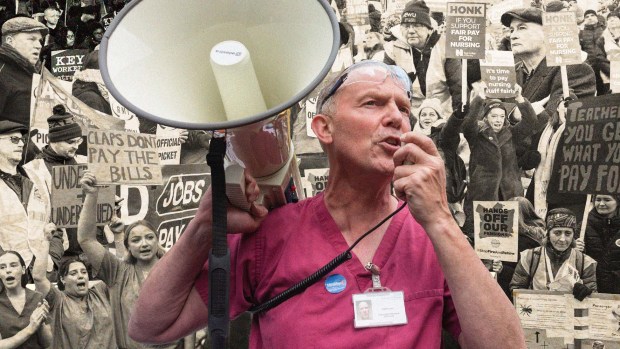It is ‘immoral’, asserted Michael Fallon at this week’s Spectator energy conference, to force basic-rate taxpayers to subsidise wealthy landowners’ wind turbines and the solar panels of well-off homeowners. It is hard to remember the last time a minister was so frank about something which had been government policy until a few hours earlier.
As a result of changes announced by the government this week, consumers will save £50 a year compared with what their bills would have been. The cost of supporting energy bills for the poor will be shifted from energy bills to general taxation, and the obligation on energy companies to subsidise home insulation will be watered down. British Gas, the largest of the ‘Big Six’ energy companies, immediately announced that its dual fuel customers would see their bills cut by an average of £53 in January, while Npower promised a ‘conditional freeze’ on energy prices until 2015.
But these savings are pigeon feed compared to the costs consumers will have to pay to help the government reach the carbon–reduction targets to which it is legally bound via the Climate Change Act: reducing carbon emissions by 60 per cent on 1990 levels by 2030 and 80 per cent by 2050. Peter Atherton, head of utilities at Liberum Capital, has calculated that the investment required to hit the 2030 target will be £360 billion to £410 billion — equivalent to ten HS2 projects.
These costs — which the government has grossly underestimated and which the public will not be prepared to bear — will have to be passed on to customers’ bills. In the shorter term, consumers face a spike in bills around 2015 as a result of an energy crunch created by the closure of old coal-fired plants.
These plants, which have been condemned as much by new rules on sulphur emissions as by carbon reduction targets, were supposed to be replaced by renewable energy sources. However, while the closures have been running to schedule, the commissioning of new plants is three years behind.
Blackouts are possible, though not inevitable, according to Atherton. The reserve margin between maximum generating output and peak demand in the winter of 2015/16 will fall to 2 per cent. Some mothballed power stations will be brought back into use. But avoiding power cuts will come at a price to consumers.
The Climate Change Act was based on the premise that the cost of green energy would come down and the cost of fossil fuels would rise inexorably. Yet the opposite has happened: the cost of fossil fuels, especially gas in the US, has plunged. Meanwhile, the next phase of offshore wind will cost more than the last, the easy-to-develop sites having been used up. Only the cost of solar power is falling sharply, because Chinese manufacturers have been selling panels at below cost.
Michael Fallon said that this week’s initiative to reduce bills had ‘nothing to do’ with Ed Miliband’s promised price freeze — even though it has been widely reported that the government had spent the past few weeks scrabbling for a way to reduce the price of energy.
High energy costs are not just about consumers, however. Over the past few months — while the economy in general has been recovering — a thousand jobs have been lost in energy-intensive manufacturing industries. That undermines efforts to rebalance the economy away from services.
The government has tried to stem the flow of these industries to countries with lower energy prices by offering rebates on energy taxes. But these are only for selected industries and do more to boost bureaucracy than to convince investors that Britain is a suitable place for manufacturing.
One thing from the conference stood out very clearly: if we are to reduce carbon emissions in a way which will not cause extreme pain to industry and to consumers, we are going to have to invest heavily in gas power stations.
The exploitation of British shale gas reserves might not have the same miraculous effect on prices as US shale has done. But unlike wind power and nuclear sites — Hinckley C power station will not generate electricity for another eight years — gas plants can be rapidly erected. According to Cuadrilla, fracked gas could be firing British power stations in two years’ time. Carbon emissions would fall sharply if gas replaced coal because, unit for unit, gas combustion emits half as much carbon dioxide as does coal combustion.
A gas-based energy policy is unlikely to happen, however, so long as the 2030 and 2050 carbon reduction targets remain. These will drive up prices in the long term, no matter how much the government plays around with our bills now. Sooner or later, the government will have to face up to the need to abolish or revise the Climate Change Act.
Got something to add? Join the discussion and comment below.
Get 10 issues for just $10
Subscribe to The Spectator Australia today for the next 10 magazine issues, plus full online access, for just $10.
The Spectator energy conference was sponsored by Eastern Airways, Liberum Capital, Ovo Energy and Eggborough Power.
You might disagree with half of it, but you’ll enjoy reading all of it. Try your first month for free, then just $2 a week for the remainder of your first year.















Comments
Don't miss out
Join the conversation with other Spectator Australia readers. Subscribe to leave a comment.
SUBSCRIBEAlready a subscriber? Log in